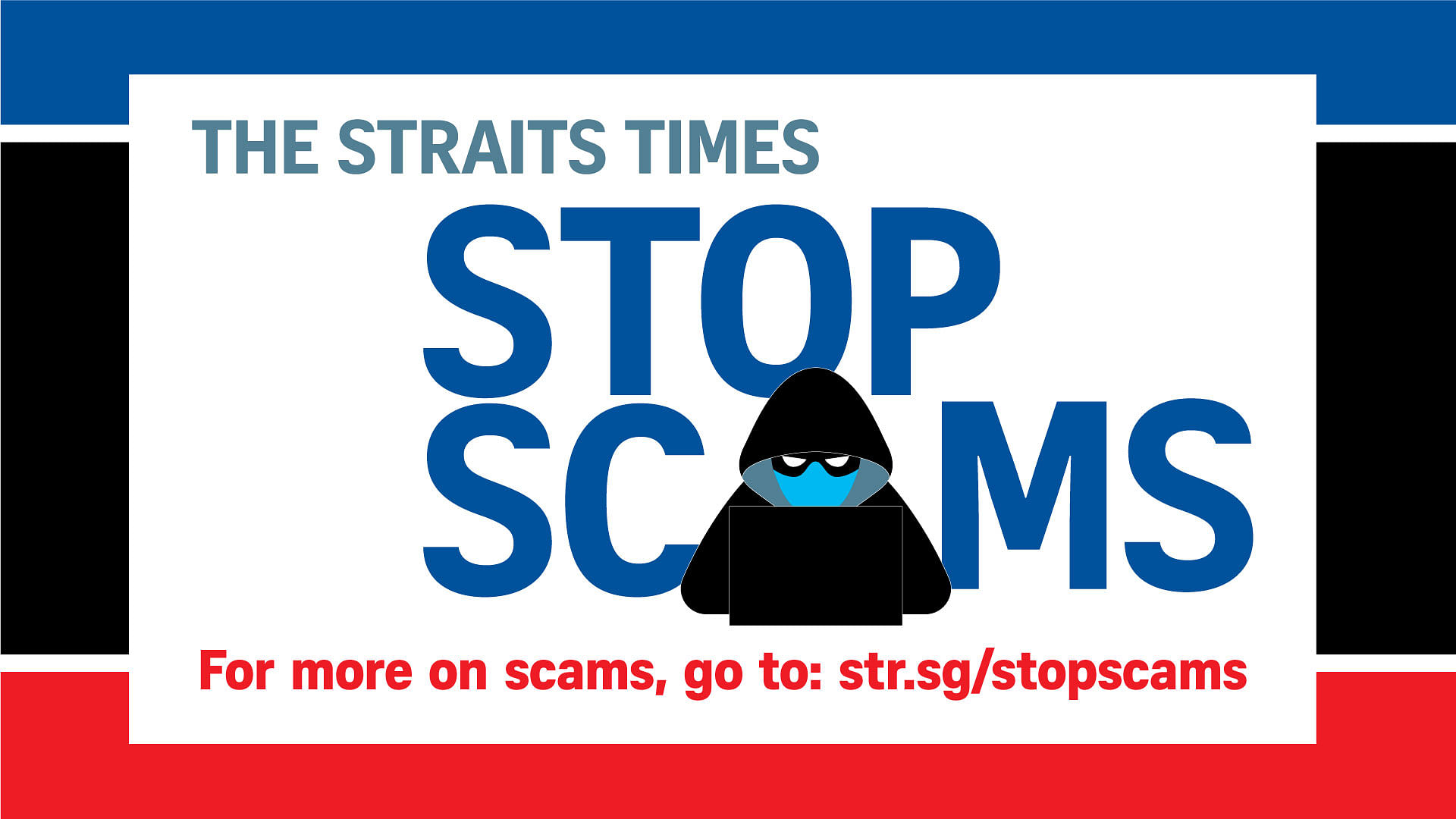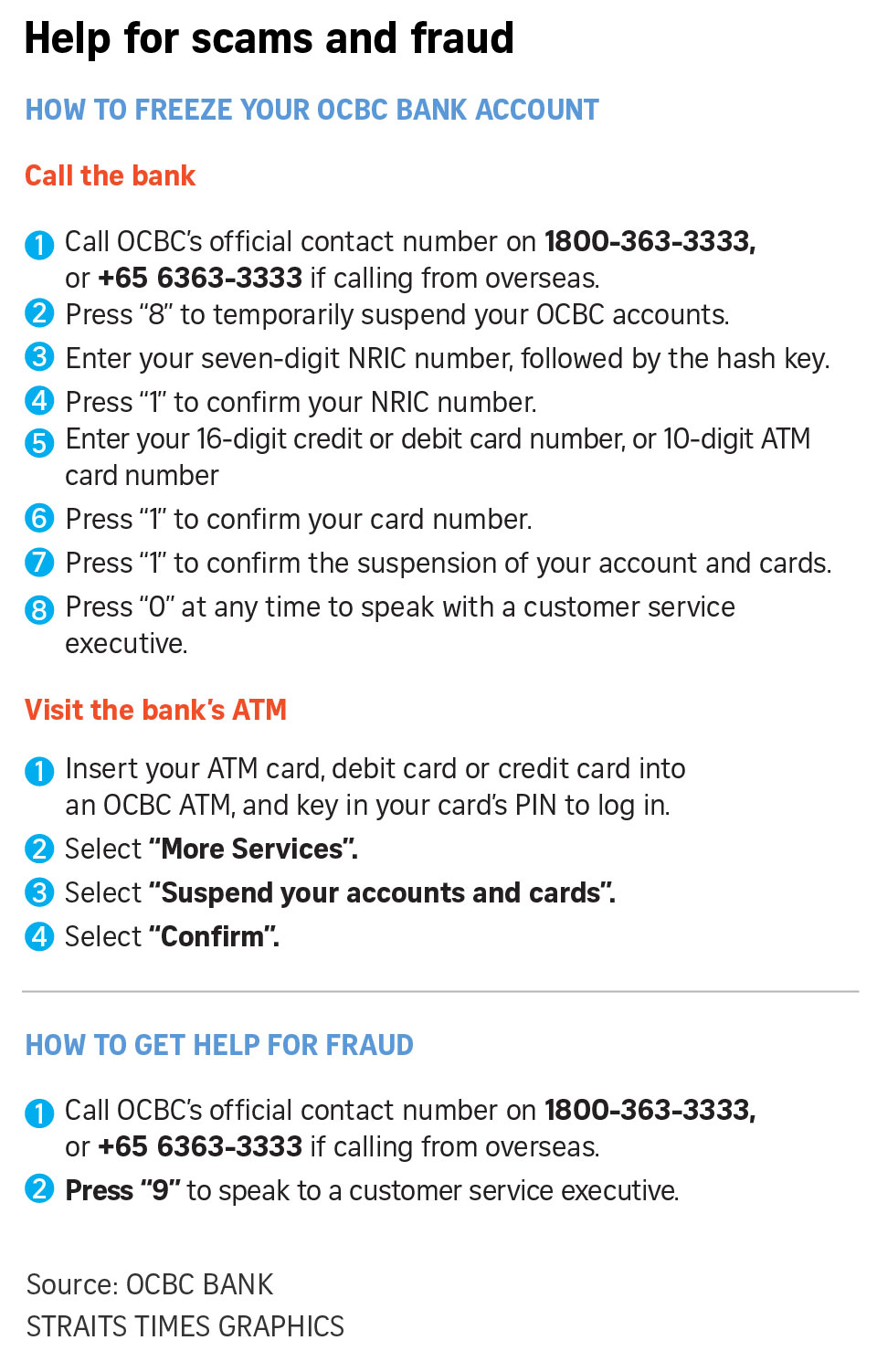OCBC customers can freeze bank accounts instantly with new 'kill switch' in emergency
Sign up now: Get ST's newsletters delivered to your inbox

After the kill switch is activated, no transactions - whether done digitally, via an ATM or at bank branches - can be made.
PHOTO: ST FILE
Kenny Chee
Follow topic:
SINGAPORE - OCBC Bank customers will be able to immediately freeze all their bank accounts in case of an emergency, such as when they suspect they have been scammed, through a new "kill switch" feature the bank rolled out on Wednesday (Feb 16).
This is the first time the bank's customers will have access to such a feature. Previously, the freezing of compromised accounts could be done only by bank staff.
Customers can activate the "kill switch" feature by calling the bank's official number on 1800-363-3333 and choosing the option "8".
This function is now available at about 500 OCBC ATMs too. By March, customers can freeze their accounts at all 534 OCBC ATMs here.
On Tuesday in Parliament, Monetary Authority of Singapore (MAS) deputy chairman Lawrence Wong touched on how a similar new feature is being studied by the Government.
Mr Wong, who is Finance Minister, also announced the Government's multi-pronged approach to fighting scams, in response to 39 parliamentary questions on the subject.
The subject has been in the spotlight after 790 OCBC customers lost $13.7 million from last December to January this year to SMS phishing, which Mr Wong said was "by far the most serious phishing scam we have seen involving spoofed SMSes impersonating banks".
Some affected OCBC customers had complained that it took a long time to get through OCBC's hotline. By the time the bank was able to take action, scammers had siphoned much of their funds.
Last month, the bank acknowledged that its customer service and response fell short of customers' expectations.
On Wednesday, OCBC said the new kill switch feature applies to all current and savings accounts, including joint accounts, ATM access, debit and credit cards, and digital banking, including OCBC Pay Anyone app access.
After this switch is activated, no transactions - whether done digitally, through an ATM or at bank branches - can be made. Recurring or pre-arranged fund transfers will be disabled as well.
This means cash withdrawals and deposits, such as crediting of salaries, cannot be done when the kill switch is on.
Other transactions that will be disabled include incoming and outgoing local and overseas fund transfers, bill payments, incoming and outgoing Giro transactions, and Nets transactions.
Customers who suspect they have fallen prey to scams or believe details related to their bank accounts have been compromised can activate this kill switch.
After the kill switch is turned on, the customer will be contacted by the bank to verify that he has activated it and, among other things, reset passwords, cancel any stolen credit cards, or delete unfamiliar fund transfer payees recently added.
The kill switch can be deactivated, but only by a bank staff, and after verified instructions from the customer have been received.
Upon deactivation, all previous authorised settings on the account will be restored. This includes Giro arrangements and post-dated fund transfers.
The entire process of reinstating a customer's account could take 10 minutes to over an hour, depending on the complexity of each case.
Kill switches are part of banks' existing infrastructure. In OCBC's case, the system was tweaked to give customers access.
OCBC reiterated that its customers can also get dedicated help for suspected fraud by calling OCBC's official number on 1800-363-3333 and selecting the option "9". This "fraud hotline" has been available since Jan 18.
Trained bank staff on the line can help customers freeze all their bank accounts, guide them on making a police report, and follow up on their banking activities after the fraud.
Previously, OCBC said a dedicated team had been set up to support its customers who were targeted by the recent SMS phishing scams. The fraud hotline is an extension of this.
OCBC said its kill switch and fraud hotline are in addition to new anti-scam measures that MAS and the Association of Banks in Singapore announced on Jan 19 that banks had to roll out in two weeks. The measures included removing clickable links in SMSes or e-mails sent to retail customers.
OCBC also urged customers to use the dedicated fraud hotline to report only fraud or scams, "so that customers who need to urgently report scams and fraudulent transactions can receive attention as quickly as possible".
The bank said that since the hotline was introduced on Jan 18, more than 70 per cent of calls made through it have been requests for fee waivers, account balance inquiries and other non-scam matters.
"Only about 30 per cent of the calls made have been about genuine fraud and scam matters," said OCBC.

Asked if they have features like OCBC’s to suspend accounts, DBS Bank and UOB said customers can freeze their credit cards through the banks’ digital banking apps.
DBS said that through the bank’s app, customers can instantly lock their credit and debit cards, enable or disable online e-commerce transactions, or switch on and off the ability to make contactless and mobile wallet payments.
Customers can also get help for scams at DBS’ and UOB’s bank branches without queueing, as well as call the banks’ dedicated scam and fraud hotlines for assistance: 1800-339-6963 for DBS and 6255-0160 for UOB.
DBS said it is evaluating options that allow customers to block access to their bank accounts themselves.
“These options must be simple to use and, more importantly, minimise any disruptions to our customers’ scheduled payment arrangements, such as tax and Giro payments,” it added.


